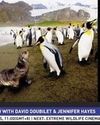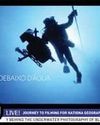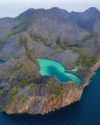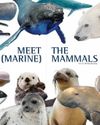Using chum to allow divers to get up close with sharks will always be controversial, but do the benefits of the practice outweigh any possible downsides?

In recent years, debate on the subject of baiting the water to attract sharks has been on the rise. Many people feel that this practice may be harmful for both humans and sharks while others insist that it is necessary to help preserve the shark population.
A study published in July 2013 in Marine Policy reported that approximately 100 million sharks are killed by humans each year. This number is unsustainable and the consequences of the prolonging of this practice could be substantial to our marine ecosystems. It is reasonable to assume that most of us should have a vested interest in the preservation of the ocean’s top predator, as our own ecosystems are intertwined with the health of the ocean. But how we go about bringing awareness about the need to preserve shark populations remains a matter of controversy.
Arguments against baiting the water for sharks include the belief that sharks may become accustomed to associating humans with food. This could harm innocent swimmers or divers because more sharks may be in the area where food is frequently dispensed. In fact, this belief does have some truth in it. Ralph Collier, who heads the “Global Shark Attack File”, reported that in the short term, there may be some correlation between shark feeding and shark bites. Indeed, some areas such as Hawaii, Florida, and the Cayman Islands outlaw shark feeding.
Some argue that baiting undermines shark conservation efforts because sharks that become habituated to receiving food from humans are instead caught by fishermen taking advantage of easy prey. Others claim that operations that use bait to attract sharks for their customers are exploiting the shark population for the monetary value in tourism.
Esta historia es de la edición Issue 01 - 2018 de Asian Diver.
Comience su prueba gratuita de Magzter GOLD de 7 días para acceder a miles de historias premium seleccionadas y a más de 9,000 revistas y periódicos.
Ya eres suscriptor ? Conectar
Esta historia es de la edición Issue 01 - 2018 de Asian Diver.
Comience su prueba gratuita de Magzter GOLD de 7 días para acceder a miles de historias premium seleccionadas y a más de 9,000 revistas y periódicos.
Ya eres suscriptor? Conectar

The Sea Specialist: An Interview With Bret Gilliam
Most people learn to crawl before they walk, but there is a man who learned to swim before taking his first steps. Diver, entrepreneur, writer, athlete, maritime specialist – Bret Gilliam is the complete package. Just add water.

The Best Of Diving In Southeast Asia: Explore The Amazon Of The Seas
Southeast Asia encompasses the world’s most biodiverse reefs and some of the best diving anywhere on the planet. From the tiniest and rarest critters to huge fish schools and the biggest pelagics, the region has it all, and there’s something to suit divers of any level.

Below With David Doubilet & Jennifer Hayes
Best known for their work with National Geographic, David Doubilet and Jennifer Hayes came together to discuss their work with the youth, and, as Jennifer put it, “submerging with the emerging talent”.

Underwater Images For The Giant Screen
Howard and Michele Hall are best known for their success in underwater IMAX filmmaking.

Journey To Filming For National Geographic Wild Brazil
Cristian is an acclaimed and highly versatile Brazilian wildlife filmmaker who works both underwater and topside.

Breaking The Barrier: The World's Deepest Dive
David Strike shared a brilliant presentation about the history of deep diving and how Lt. George Wookey achieved the world’s deepest dive in 1956 using a surface-supplied rebreather.

Dive the Golden Land
The Best of Diving In Southeast Asia

OFFICIAL LAUNCH OF BLUE HOPE
Top Session of the Week (14,319 (Views) / 42,831 (Reach)

MEET THE (MARINE) MAMMALS
MEET THE (MARINE) MAMMALS

Fashion Faux Pas
What can be done to mitigate the impact of the garment industry on our oceans?